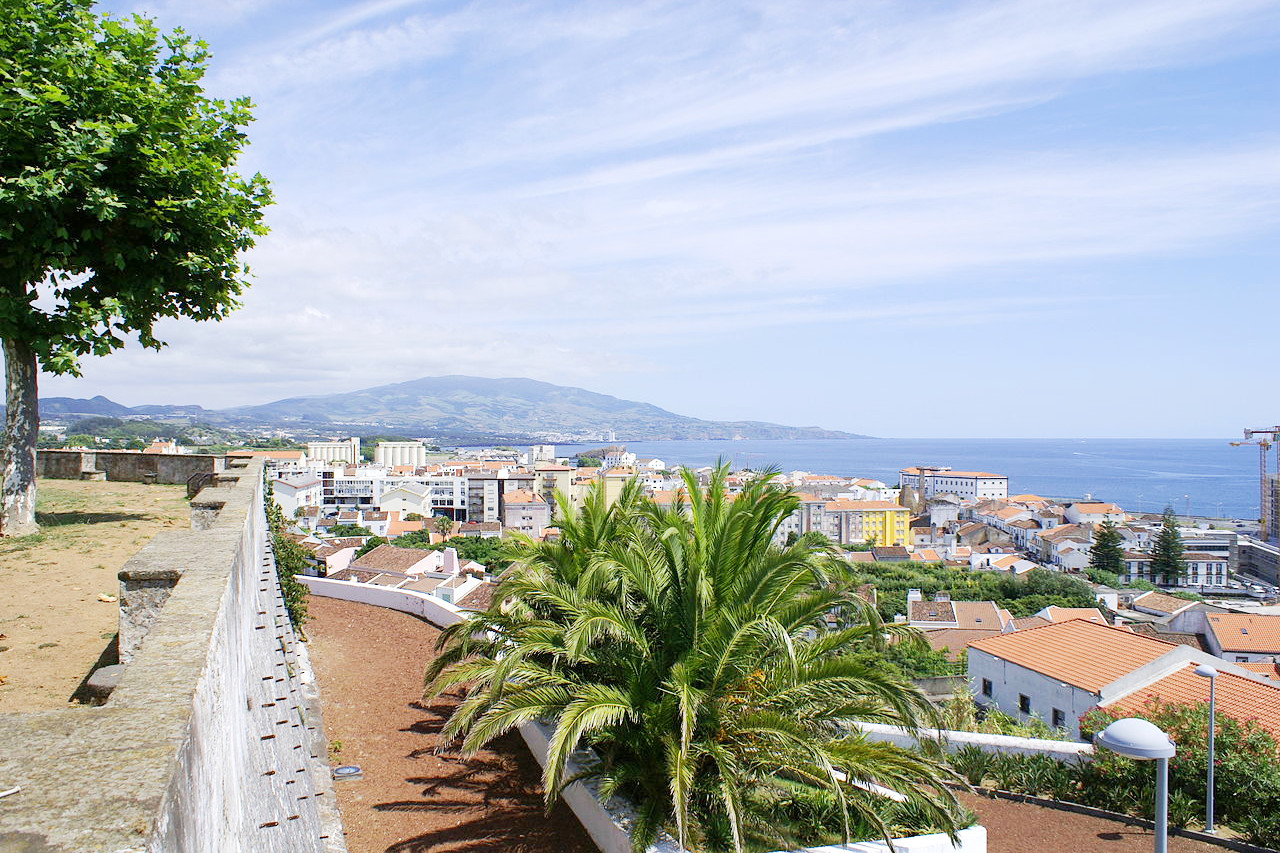The Climate of the
Azores
 View over Ponta Delgada, São Miguel Island
View over Ponta Delgada, São Miguel Island
What is the climate of the Azores like?
The Azores, discovered and settled by the Portuguese in the 15th century, consist of a group of nine main islands situated about 1,300 km (800 mi) west of Portugal. The land area is rather less than that of the state of Rhode Island. All the islands are hilly or mountainous, with peaks rising to between 600 to 2,300 meters (2,000–7,500 feet).
The Azores have a very mild climate throughout the year with no great extremes of temperature, although the climate can be made uncomfortable by the humidity. Summer days are warm but rarely hot, and in winter cold weather with frost and snow is unknown at sea level. Winter weather can be stormy and changeable when deep Atlantic depressions track across or near the islands. Summer is generally a more settled season but occasional storms and wet weather can occur.
In winter the prevailing winds are from the northwest, west and south; in summer the most frequent are the north, northeast and east. The weather is often very stormy, and the winds from the west and southwest made the the coasts dangerous in the days of sailing ships.
Sunshine amounts are only moderate for the latitude and range from an average of three to four hours a day in winter to seven to eight in summer. Rainfall is well distributed around the year but is heavier and more frequent in winter. July is the driest month.
The climate of Angra do Heroísmo is representative of conditions at or near sea level in the Azores.
| Climate data for Angra do Heroísmo (1981–2010) | |||||||||||||
|---|---|---|---|---|---|---|---|---|---|---|---|---|---|
| Month | Jan | Feb | Mar | Apr | May | Jun | Jul | Aug | Sep | Oct | Nov | Dec | Year |
| Average high °C (°F) | 16.2 (61.2) | 16.1 (61.0) | 16.5 (61.7) | 17.3 (63.1) | 18.8 (65.8) | 21.1 (70.0) | 23.9 (75.0) | 25.1 (77.2) | 24.0 (75.2) | 21.3 (70.3) | 18.7 (65.7) | 17.0 (62.6) | 19.7 (67.4) |
| Daily mean °C (°F) | 14.1 (57.4) | 13.8 (56.8) | 14.2 (57.6) | 14.9 (58.8) | 16.3 (61.3) | 18.5 (65.3) | 21.0 (69.8) | 22.2 (72.0) | 21.3 (70.3) | 18.9 (66.0) | 16.5 (61.7) | 14.9 (58.8) | 17.2 (63.0) |
| Average low °C (°F) | 12.0 (53.6) | 11.5 (52.7) | 11.9 (53.4) | 12.4 (54.3) | 13.7 (56.7) | 15.8 (60.4) | 18.1 (64.6) | 19.1 (66.4) | 18.5 (65.3) | 16.4 (61.5) | 14.2 (57.6) | 12.7 (54.9) | 14.7 (58.4) |
| Average precipitation mm (inches) | 107.6 (4.24) | 110.1 (4.33) | 107.8 (4.24) | 85.7 (3.37) | 72.3 (2.85) | 55.2 (2.17) | 29.1 (1.15) | 48.3 (1.90) | 89.7 (3.53) | 115.6 (4.55) | 122.8 (4.83) | 155.1 (6.11) | 1,099.3 (43.27) |
| Source: Instituto de Meteorologia | |||||||||||||
References
- E. A. Pearce, Charles Gordon Smith, (1990) The Hutchinson World Weather Guide, John Murray Press. ISBN 1859863426
- Timothy L. Gall, (ed.), (2003), Worldmark Encyclopedia of the Nations, Eleventh Edition, Thomson Gale
- Hugh Chisholm, (ed.), (1911), Encyclopædia Britannica, Eleventh edition, Cambridge University Press
The Climate of the
Azores

In summary:
The Azores experience a Mediterranean-type climate bordering on the subtropical. The warm North Atlantic waters temper the climate so that there are no extremes of temperatures. Summer days reliably stay around 25°C (77°F), and winters are very mild.
Rainfall is well distributed around the year but is heavier and more frequent in winter.